When do the rules and theories of contemporary workplace design not apply? In the case of Woods Bagot’s new Melbourne headquarters, project lead Bruno Mendes threw the rule book out and picked up a cookbook instead.
January 16th, 2018
Perhaps one of the stiffest challenges an architect will face during their career is designing their own studio. “There really is nothing harder,” confirms Bruno Mendes, Melbourne based principal with Woods Bagot (WB).
In taking up the mantle of project lead on WB’s new, in-house designed Melbourne studio, Mendes had some clear terms: “I said, ‘If I do this, you’ll leave me alone and I’ll do it’.”
The project would be designed and built over a tight period of two and half months, and the studio’s staff of 100+ were to be brought in at three vital points during the process: at briefing, which involved a studio-wide survey, and for the presentation of those survey findings (return briefing). On receipt of the keys, “I brought the entire studio over to see the [raw] space, and then they didn’t see it until it was completed,” says Mendes.

Mendes’ staff survey threw up lots of interesting results – key terms that ranged from ‘boring’ to ‘woeful’ to ‘exciting’. “The one that worried me most was ‘non-collaborative’,” says Mendes. In presenting his findings back to his team, the call for a variety of collaborative spaces formed a major part of the brief.
Mendes makes no bones about the fact that he isn’t a workplace architect. “There’s a lot of theory and terminology that’s been developed around workplace [design]. Frankly speaking, I didn’t buy into any of it. To create our new space it was always going to be focused on the team, worked along with a clear architectural vision around materiality and craft. It wasn’t a workplace vision we were creating, more a vision for our new studio.
The idea of craft is extremely important, especially when dealing with timber and steel. The studio is very much an extension of the lessons learnt from building my own house ‘Law Street’ – an experiment in crafting steel and timber.
“In our old premises, we lacked a variety of sufficient collaboration areas. We had an insufficient number of meeting rooms and as a result most of our meetings were at our desks.” When it came to the new tenancy: “The bones were good, but spread over two floors,” notes Mendes. “We needed to immediately connect the two floors and break down the ‘us and them’ mentality. It called for a significant gesture.”

That gesture was inspired, in part, by “one of the cheapest you’ll buy online!” says Mendes. The Family Meal by Ferran Adria from El Bulli is filled with the recipes of the dishes eaten by the El Bulli team at staff mealtime. Perhaps what struck Mendes most about this cookbook was its spirit of sharing.
“It reveals the importance of that time in the day when they sit down, collaborate and share new ideas over food and wine – it’s that idea of breaking bread together.”
For Woods Bagot too, the most creative moments happen when they get away from their desks. The central auditorium is Mendes’ ode to that idea of ‘family time’. Connecting the upper staff area with the entry level reception, it hosts presentations, get-togethers – even karaoke sessions – among staff. More recently it has gained the attention of external parties who come in to host their sharing sessions here as well.
“It was one of the most crucial moves,” says Mendes. “Everything else just flowed from that.” As Mendes points out, the forum may appear as architectural expression, but really it’s a “framework to allow that collaboration to happen.”
This project was entered in the 2017 INDE.Awards. Enter the INDE’s now and be part of the Asia Pacific’s biggest design award program.
–
Want to know what’s specified? Read the Dissections for Woods Bagot Melbourne. This project originally appeared in issue #66 of Indesign.
INDESIGN is on instagram
Follow @indesignlive
A searchable and comprehensive guide for specifying leading products and their suppliers
Keep up to date with the latest and greatest from our industry BFF's!
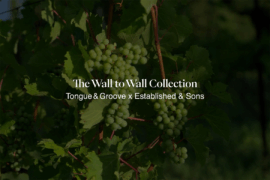
London-based design duo Raw Edges have joined forces with Established & Sons and Tongue & Groove to introduce Wall to Wall – a hand-stained, “living collection” that transforms parquet flooring into a canvas of colour, pattern, and possibility.

For Aidan Mawhinney, the secret ingredient to Living Edge’s success “comes down to people, product and place.” As the brand celebrates a significant 25-year milestone, it’s that commitment to authentic, sustainable design – and the people behind it all – that continues to anchor its legacy.
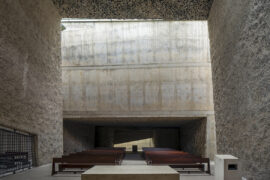
The World Architecture Festival has named The Holy Redeemer Church and Community Centre of Las Chumberas in La Laguna, Spain as World Building of the Year 2025, alongside major winners in interiors, future projects and landscape.
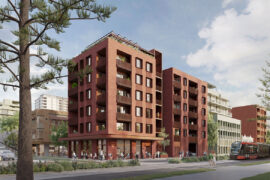
The Minns Labor Government has unveiled nine new architect-designed mid-rise apartment patterns, expanding the NSW Housing Pattern Book and accelerating the delivery of accessible, high-quality housing across the state.
The internet never sleeps! Here's the stuff you might have missed
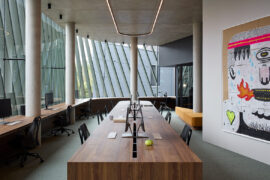
Smart Design Studio and Those Architects combine landmark and workplace in Bundarra, a Surry Hills gateway blending old and new.
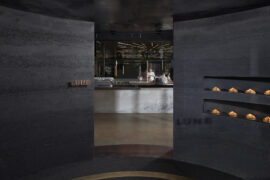
Cieran Murphy has been awarded The Photographer – Commercial at the INDE.Awards 2025. His work on Lune Rosebery captures the immersive design and storytelling of the space, highlighting the interplay of form, material and atmosphere in this contemporary culinary destination.